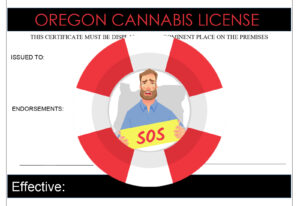 On Friday, Oregon Governor Kate Brown issued Executive Order No. 19-09 (the “Order”), which directs the Oregon Liquor Control Commission (OLCC) and the Oregon Health Authority (OHA) to “take immediate action to address the vaping public health crisis.” In one sense, the Order is narrower than many people feared and expected: specifically, it bans only “flavored vaping products” and not all vaping products. In another sense, the Order is broader than expected: it requires OLCC and OHA to come up with emergency rules, legislative proposals and even an anti-vaping education campaign, while creating a Vaping Public Health Workgroup to presumably drive Oregon policy going forward.
On Friday, Oregon Governor Kate Brown issued Executive Order No. 19-09 (the “Order”), which directs the Oregon Liquor Control Commission (OLCC) and the Oregon Health Authority (OHA) to “take immediate action to address the vaping public health crisis.” In one sense, the Order is narrower than many people feared and expected: specifically, it bans only “flavored vaping products” and not all vaping products. In another sense, the Order is broader than expected: it requires OLCC and OHA to come up with emergency rules, legislative proposals and even an anti-vaping education campaign, while creating a Vaping Public Health Workgroup to presumably drive Oregon policy going forward.
Immediately following the Order’s release, there was a flurry of takes on its meaning and impact. Things evened out a bit after OLCC issued a news release of its own (the “News Release”), clarifying that agency’s reading of the Order “does not include terpenes derived from marijuana as flavor” to fall within the ban (more on that below).
This blog post answers some high-level questions we received from clients in the immediate wake of the Order and the News Release, and gives some thoughts for going forward.
Does the ban take immediate effect? No, in the sense that the Order itself doesn’t ban anything– including flavored vaping products of any kind. Instead, it directs OLCC and OHA to take that step through “immediate” emergency rulemaking. As far as when those rules will issue, the News Release does not commit to any certain date, but it’s highly likely that we will have rules this week or next.
What’s going to happen with banned products? The News Release states that “OLCC will provide further guidance to licensees about taking inventory of flavored or non-marijuana terpene-containing products, removing them from retail store shelves and setting those items aside.” This means that there will be no grandfathering of non-marijuana terpene-containing (“NMTC”) products created or distributed before the rules take place. Retailers should note that the News Release warns of “compliance checks” to boot.
What does industry think? Most people and industry trade groups seem to feel that the Order, coupled with the News Release, is significant but could have been more disruptive. Anyone making NMTC products is obviously going to need to adapt very quickly–and at least one estimate puts about half of all processors in this category–but given the grave public health concern and possible alternative options presented to Governor Brown, a 6-month ban that is limited to NMTC products is something folks can work with. And they will have to.
What should vape processors be doing? Besides the obvious step of moving away from NMTC formulations, processors should consider: 1) communicating with distribution and retail partners as to product line revisions; 2) re-working packaging and labeling submissions for OLCC review and approval, as needed (there will be bottlenecks here); 3) working on public and consumer messaging; and 4) reaching out to OLCC at marijuana@oregon.gov with any informed and constructive input for the rulemaking process.
Are vape products aside from NMTC products in the clear? In the short term, seemingly yes. But in the mid- and long term, certainly not. As mentioned above, the Order is broad in that it creates a Vaping Public Health Workgroup to make recommendations on Oregon’s “vaping public health crisis.” No one knows what those recommendations will be, but an outright ban on vaping products is undoubtedly in play. Factors that may drive the Workgroup’s recommendations include: 1) any new information or scientific consensus on the cause of the vaping injuries; 2) federal action, including by and through Food and Drug Administration (which has finally begun to perk up on vaping); 3) the findings and recommendations of the Vaping Public Health Workgroup; and 4) further action by Governor Brown and the Oregon legislature.
This last point is worth drilling down on a bit further: in the Order, Govern Brown requires OLCC and OHA to actually develop legislative proposals, presumably for the 2020 session which begins in earnest next February. Because it’s a short session, we would have any new state laws on vaping by March of next year. The order specifically asks for legislative proposals to: 1) ban all flavored vaping products permanently, including those containing nicotine or THC; 2) disclose all ingredients in vaping products to consumers; 3) increase the regulatory oversight of vaping products; and 4) clarify and expand OHA’s authority to take action. So, a wide scope.
We are at a critical but early point on regulation of vaping both inside and outside of the OLCC market in Oregon. Everything is in play, from the continued prohibition on NMTC products to an outright ban on vaping-related sales altogether. Given the range of variables informing the possible outcomes, it is almost impossible to predict what will happen. For now, industry should support a broad inquiry into the causes of the public health epidemic while preparing to retool on the fly.
Stay tuned as we continue to cover cannabis vaping law and policy inside and outside of Oregon. Tomorrow, we will address what cannabis businesses can expect nationwide with respect to business impacts from the vaping epidemic.























